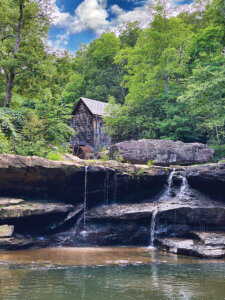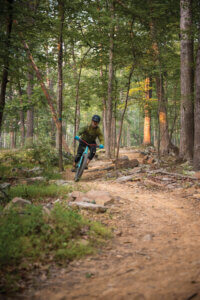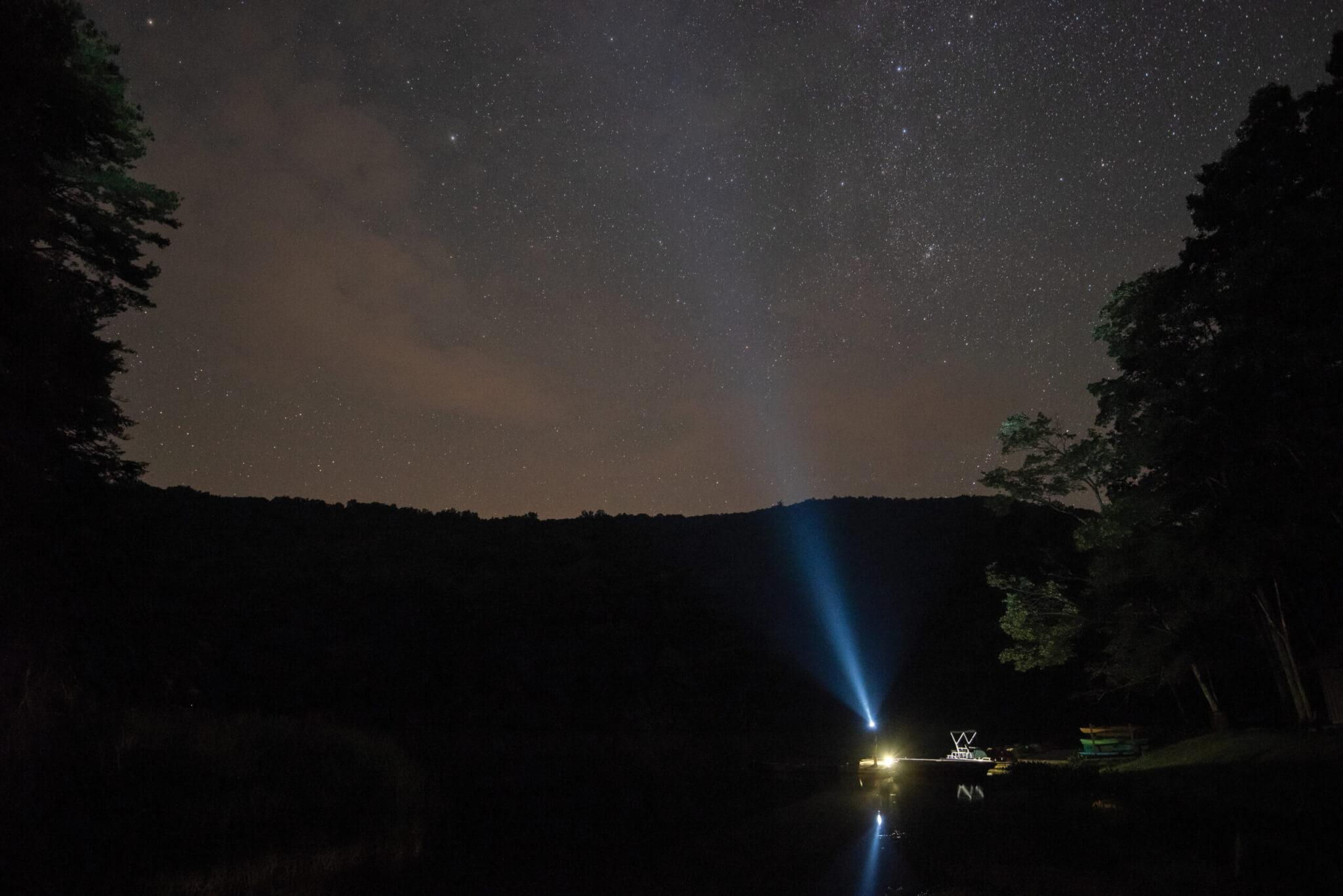
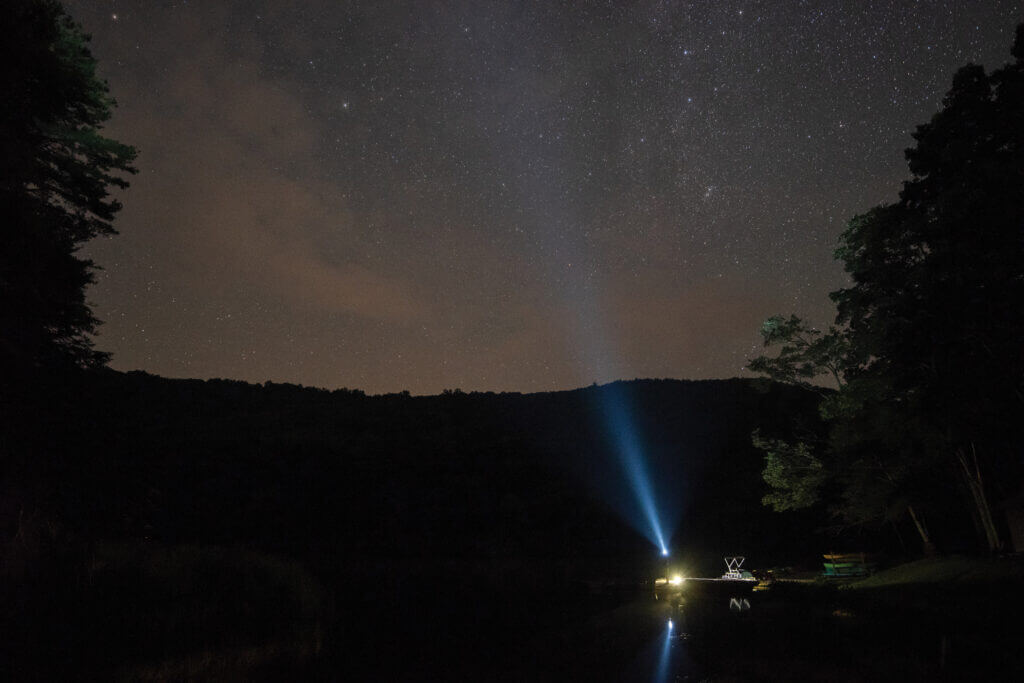
Watoga State Park receives state’s first International Dark-Sky designation.
This story was originally published in the January 2022 issue of Wonderful West Virginia. To subscribe, visit wonderfulwv.com
Written by Wendy Holdren
Watoga State Park is known for its darkness. The park is pitch black at night. Stargazers have enjoyed the view since it opened to the public in July 1937. When Jody Spencer was an intern back in the early 1990s, he remembers the gift shop selling a solid black postcard that read, “Watoga at Night.”
The decades-old inside joke will soon become internationally known: In October 2021, Watoga State Park was approved by the International Dark-Sky Association (IDA) as an International Dark Sky Place (IDSP). This means the international organization has reviewed and approved Watoga as having an exceptional and distinguished quality of starry nights—in other words, it’s a stargazer’s haven.
“My family and I have gone to the overlook at the park over the years to watch for shooting stars,” says Spencer, who is now the superintendent at the state park. “It’s a well-kept secret. Several of us here know and appreciate it, and our guests often talk about how dark it is here.”
About four years ago, a visitor was so struck by the quality of the night sky at Watoga that he emailed Spencer. “He was involved with dark skies in Virginia,” Spencer says. “He said he went to Watoga and he believed it would be one of the best locations for an IDA designation in the region. That’s how all this got started. I had never heard about the International Dark-Sky Association until then.”
Spencer was intrigued by the possibility, so he and a naturalist at the park looked into the application process. They were immediately overwhelmed. They tabled the conversation for about a year, until a couple of new members of the Watoga State Park Foundation—Louanne Fatora and Mary Dawson—took an interest and renewed the effort. They agreed to see the application through, embarking on what would become a three-year journey, checking all the boxes and fulfilling all the requirements for a successful designation. With a laugh, Spencer recalls an email that started it all. “I can’t remember the name of this random gentleman, but I wish I could, so I could give him credit.”
Dotting the Is, Crossing the Ts
Located in the mountains of Pocahontas County, Watoga State Park features many recreational activities, such as hiking, camping, swimming, and fishing. With 10,100 acres of land, it’s West Virginia’s largest state park.
The size of the park, paired with the adjacent 9,000-plus acres of Calvin Price State Forest, was an attractive feature for the IDA application. The undeveloped state forest area, mostly used for hunting and fishing, added to the surrounding nighttime darkness. “We have just a couple small towns around, which don’t tend to flood the night sky,” Spencer says. “The closest town is Hillsboro, which is roughly three miles from the park, then the next closest is Marlinton.” The population there is well under 1,500.
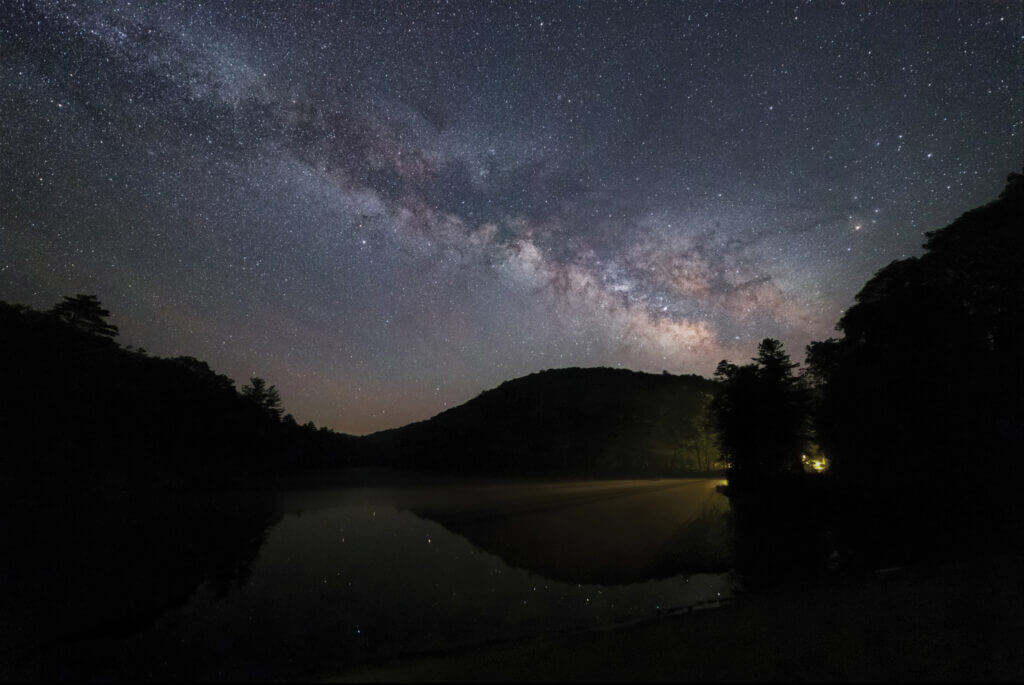
More rural, isolated areas are less prone to light pollution than their populated, urban counterparts. Light pollution is defined by the IDA as the excessive use of artificial light, which can include building exterior and interior lighting, advertising, commercial properties, offices, factories, streetlights, and illuminated sporting venues. The IDA argues that most outdoor lighting used at night is inefficient, as the light source is not targeted or shielded and is therefore wasted by spilling into the night sky rather than focusing on the intended areas.
For Watoga, adhering to the lighting guidelines was one of the most time-consuming and resource-intense parts of the application process. The crew had to ensure the lights within the 10,000-plus acres of park were shielded and downward-facing, with bulbs that don’t exceed specified ratings for lumens, or brightness. Thanks to a $5,000 contribution from West Virginia State Parks Foundation and assistance from the local power company, the lighting project was completed. “We wouldn’t have had the resources for an elective project like this otherwise,” Spencer says.
Many scientific requirements were part of the application process as well. “Without the volunteers in the community, it would have been nearly impossible to do this on our own,” Spencer says. He notes not only the time dedicated to the project, but the expensive pieces of equipment necessary to obtain light readings, which are measures of the light pollution in the area. “People really came from everywhere, not just West Virginia, but out of state to help volunteer and take light readings.”
Back to Black
Less than 100 years ago, the IDA says, everyone could look up and see a spectacular starry night sky. The widespread use of artificial light has eliminated that view for many around the world. But now, Watoga State Park joins a unique group of designated areas that remain unblemished by light pollution.
While it’s hard for Spencer to speculate on the impact the designation will have on day-to-day operations, he’s optimistic that the effects will be positive. “I don’t know how many people are involved in these types of activities but, if you look at other parks that promote it, it seems to be a big deal.” He’s confident he and his staff will be able to comfortably handle the additional influx of visitors.
Every night won’t be perfect, so Spencer doesn’t expect the park to be consistently inundated. Anytime there’s a significant moon out, he says the night sky isn’t all that visible. There are times of the month when it’s darker and clearer, so park staff expect to see an increase in visitation then.
“For me, one of the coolest things is when you get folks who stay here in the campground or a cabin. They’re from more urban areas, asking what to do while they’re here. They ask, ‘What would you suggest?’ I tell them to go to the overlook if it will be a clear night and stargaze for a while with the whole family. To have those people return to the office the next day giddy with excitement is really rewarding. It’s not just kids, either. For some adults, it’s their first time seeing a shooting star. It’s rewarding to steer someone in that direction, then to hear their experience. They often say, ‘Thank you for turning me onto that.'”
Planning Your Visit
Watoga State Park features 34 rental cabins, including legacy cabins constructed by the Civilian Conservation Corps (CCC) that are open seven months of the year—April through October—and classic cabins that are open year-round. Spencer says the cabins feature spectacular nighttime views in the winter. “I’ve always loved night patrols here,” he says. “In the winter, you can see meteor showers. It’s always so clear, so crisp.” The night sky is clearer during the winter—Earth’s atmosphere can be hazy in the summer due to the moisture in the air, but cold air holds less moisture, making winter ideal for stargazing.
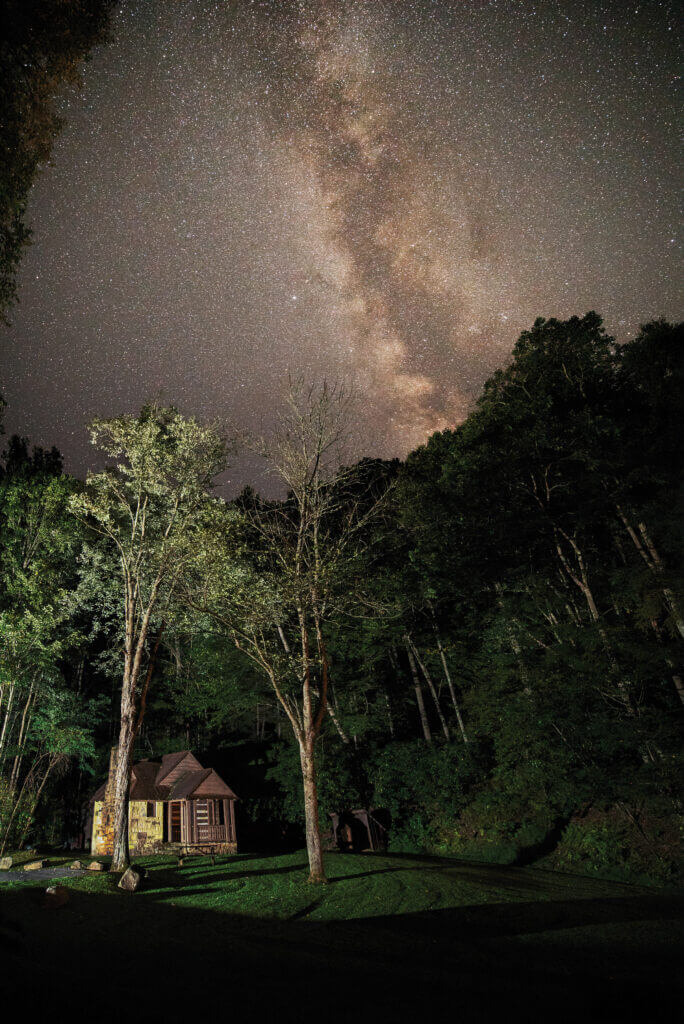
At entrances to many state parks, guests are notified about a specific closing time for the park. Unofficially, Watoga has always welcomed visitors after hours at designated stargazing locations, so long as they are not being intrusive to overnight guests in the campground or cabins. That policy will become official as more nighttime visitors are expected with the IDA designation. The Watoga crew will patrol to ensure visitors are being respectful to the park and to overnight guests.
Signage will soon be in place, marking the state park as one of fewer than 200 certified IDSPs in the world. A local grant has provided funding for upgraded entrance signs as well as an interpretive standalone kiosk near the administrative office, which will outline the concept of dark skies. “We hope it will catch the attention of people who aren’t looking for it,” Spencer says. “They’ll see an attractive sign and then they can learn more.”
Dark Sky programming will also be incorporated at Watoga. Telescopes have been purchased for viewing parties and stargazing parties. Spencer works closely with the West Virginia Department of Tourism to ensure the latest events, activities, and programs are posted on the state park website, www.wvstateparks.com. He says folks who are interested should check the site regularly for updates.
Watoga will also be listed on the IDA site, www.darksky.org, joining the likes of Grand Canyon National Park, Joshua Tree National Park, and others. “That’s one of the benefits of an IDA designation,” Spencer says. “We’ll be placed on certain lists and certain sites, so folks who are familiar with dark skies or astronomy will see that our park has met these certain standards.”
While Watoga is the only state park to seek the application to date, two adjacent state-managed areas also received designations as part of the application—Calvin Price State Forest and Droop Mountain Battlefield State Park. Deputy Chief of West Virginia State Parks Brett McMillion expects other applications may follow. He notes that Pipestem Resort State Park has also been mentioned as a potential candidate.
“It continues to show how West Virginia State Parks are always looking for ways to appeal to guests and to provide a variety of offerings,” McMillion says. “This project designation relates directly to our mission of conservation.”




